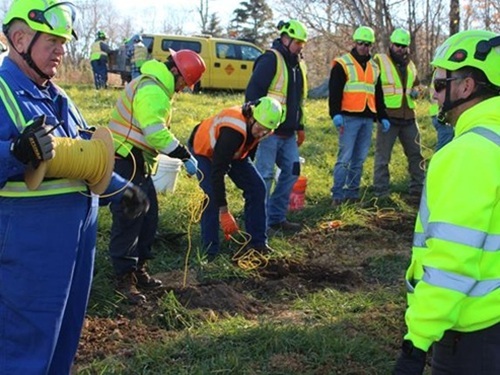Since 1921, 189 California Department of Transportation employees have been killed on the job – and one of the biggest hazards to them and anyone working on the roads is from motorists who do not exercise caution. For that reason, Caltrans is joining forces with the California State Transportation Agency, California Highway Patrol, and the California Office of Traffic Safety, to initiate a new “Be Work Zone Alert” public awareness campaign to remind drivers to slow down when passing highway workers.
“Being a transportation worker is one of the most hazardous professions in the nation” noted Laurie Berman, director of Caltrans, in a statement. “We hope this campaign will move every Californian to consider the dangers the brave men and women of the department face every single day and slow down.”
[embedyt] https://www.youtube.com/watch?v=nAJDKlYC_2A[/embedyt]
In 2018, more than 7,000 work-zone collisions occurred on California roadways alone, with roughly 2,300 resulting in injuries and 46 involving a fatality. Nationally, drivers and passengers account for 85 percent of the people who are killed in work zones.
[Editor’s note: As but one example of the critical work performed by highway workers, the Caltrans video below highlights the work required to keep the 13-mile-long State Route 120 west of U.S. Highway 395 in Mono County, CA – commonly known as Tioga Pass – clear of snow, ice, rock, and other debris.]
[embedyt] https://www.youtube.com/watch?v=wAjm1usE9oY[/embedyt]
“Our children depend on your safe driving all day, every day,” added Elissa Konove, CalSTA’s undersecretary. “This campaign aims to protect highway workers who work inches from traffic daily to maintain our state’s transportation system.”
“Mere seconds of inattention or distraction can be destructive to the lives of so many people,” noted Warren Stanley, CHP’s commissioner. “The CHP is a proud partner of Caltrans and hopes efforts like this one reduce the risks to everyone on our roadways.”
He added that California’s “Move Over” law requires all drivers to move over a lane if safe to do so, or slow down when they see amber flashing lights on Caltrans vehicles, or other emergency vehicles and tow trucks.
 States
States
NCDOT Staff Participate in ‘Explosive’ Technical Training
December 19, 2025 States
States

